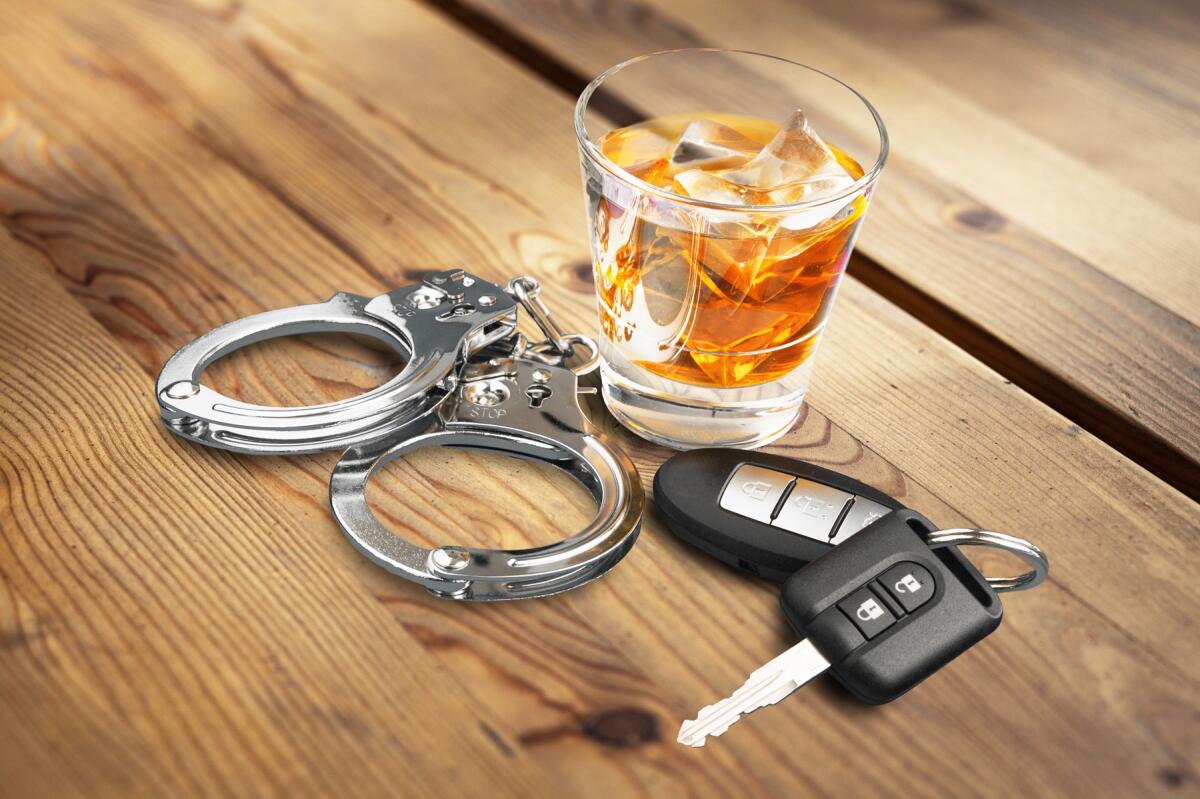Case of alleged drunk driver accused of murder in fatal Huntington Beach hit-and-run handed to jury

Jurors heard closing arguments Tuesday before deliberating on the case of a man previously convicted of DUI who then had over twice the legal amount of alcohol in his system when his BMW slammed into a bicyclist three years ago in Huntington Beach.
The 28-year-old defendant, Victor Manuel Romero, and his public defender, Madeline Berkley, did not dispute that he had a blood alcohol content of at least 0.19% when he was behind the wheel of a speeding 328i that slammed into then 33-year-old Raymond MacDonald at the intersection of Beach Boulevard and Adams Avenue at about 2:10 a.m. March 30, 2019. They also did not deny that he crashed into a tree about a minute later at Lake Street, then ran from the scene of what wound up being the third collision he was involved in that evening.
“If you’re unaware that you’ve done anything wrong, why would you run?” Orange County Deputy Dist. Atty. Janine Madera asked jurors rhetorically Tuesday.
Romero had been drinking at Hurricanes and the Huntington Beach Beer Co. before getting into a fight on the second floor of a parking structure on the 200 block of Main Street that evening. A 55-second video taken from social media and played in court showed only a portion of an altercation that went on for about 7 minutes, Berkley said.
In the video, Romero can be seen surrounded by a group of people as he fell face-first onto concrete, and was then pummeled by a man mounted over him on the ground.
Berkley and an expert witness, Dr. Manuel Saint Martin, said the defendant likely suffered a concussion during the fight that impaired his memory and ability to reason. His attorney claimed that, if not for the injury he sustained prior to the crashes, he would never have tried to drive home.
“These are the kinds of impacts that would jar your head and brain in such a way to affect your decisions,” Berkley told jurors. “The lights were on, but nobody was home.”
After the fight, Romero told one responding officer that he was going to hire an Uber driver, but then told another that he would ask his sister to arrange a ride home. He proceeded to walk to an area where others were waiting to be picked up, but then took an elevator to the second floor and got into his luxury sports sedan.
Madera claimed Romero was lying to police and intentionally drove drunk. Berkley suggested he had no recollection of those conversations due to a concussion and was operating on “autopilot” as he peeled out of his parking spot, leaving skid marks and striking a Cadillac that belonged to the owner of Hurricanes as he left.
Madera pointed out that Romero blew through a stoplight that had been red for about 20 seconds before he struck MacDonald, who was on his bicycle and hauling a trailer full of his belongings at the time. A witness who was stopped at the intersection said he heard tires screeching during the crash, suggesting that the driver either hit the brakes or swerved and may have been aware he had struck someone.
Relatives of MacDonald present in court Tuesday wiped tears from their eyes as attorneys went over the moments leading up to his death.
Romero did not stop. Another motorist estimated that his BMW was traveling 70 or 80 mph when it collided head-on with a tree, totaling the sedan’s front end and causing its airbags to deploy.
That witness got out of his car to check on the BMW’s driver, but Romero had already left the scene. Footage from a nearby doorbell camera showed what appeared to be the defendant running from the crash site in the direction of the bars he had been drinking at earlier.
The defendant’s DNA was found all over the wrecked car, including its driver-side airbag. His wallet was found inside. A trail of blood led from the BMW toward Hurricanes and the Huntington Beach Beer Co.
Romero returned to the area of the two bars, and when he was confronted by the owner of the Cadillac he damaged in the parking lot, he claimed that he had been carjacked. When police found him seated on a fountain near the two bars, the key to the sedan was hanging from a lanyard around his neck.
Romero was taken to a hospital following his arrest. During an initial interview with Huntington Beach police he hardly mentioned the crash that killed MacDonald, Madera said.
“Honestly, my biggest concern was, I got slept,” Romero said in a recorded conversation with officers, repeatedly using a slang term for getting knocked unconscious.
Madera suggested that the defendant’s fixation on the fight, rather than the fatal crash, was evidence that he made no consideration for the safety of others that evening. But Berkley and Saint Martin claimed he was exhibiting perseveration, a continual repetition of phrases or thoughts that is a telltale symptom of a concussion.
Perseveration is one of only a few behaviors that might distinguish a person with a concussion from someone exhibiting signs of alcohol intoxication. Saint Martin testified that people with such an injury tend to exhibit symptoms for at least two weeks after receiving trauma. Madera pointed out that Romero was not constantly repeating phrases during a second interview with Huntington Beach Police investigator Bernard Atkins at the hospital sometime after 9 a.m. on the day of the crash.
During that second interview, Romero did recall that he had previously been convicted of driving while intoxicated, and had been warned that he could be charged with murder if he wound up under the influence of drugs or alcohol during a fatal crash. Madera claimed he chose to ignore that admonition in 2012, the advice of police and bar patrons at the parking lot the day MacDonald died, and numerous other “warnings the universe gave him that night.” She argued his actions meet the definition of second-degree murder as well as hit-and-run resulting in death.
“The defendant didn’t intend to kill; there is zero evidence of that,” Madera said. “But he knew his actions were harmful to human life.”
All the latest on Orange County from Orange County.
Get our free TimesOC newsletter.
You may occasionally receive promotional content from the Daily Pilot.




